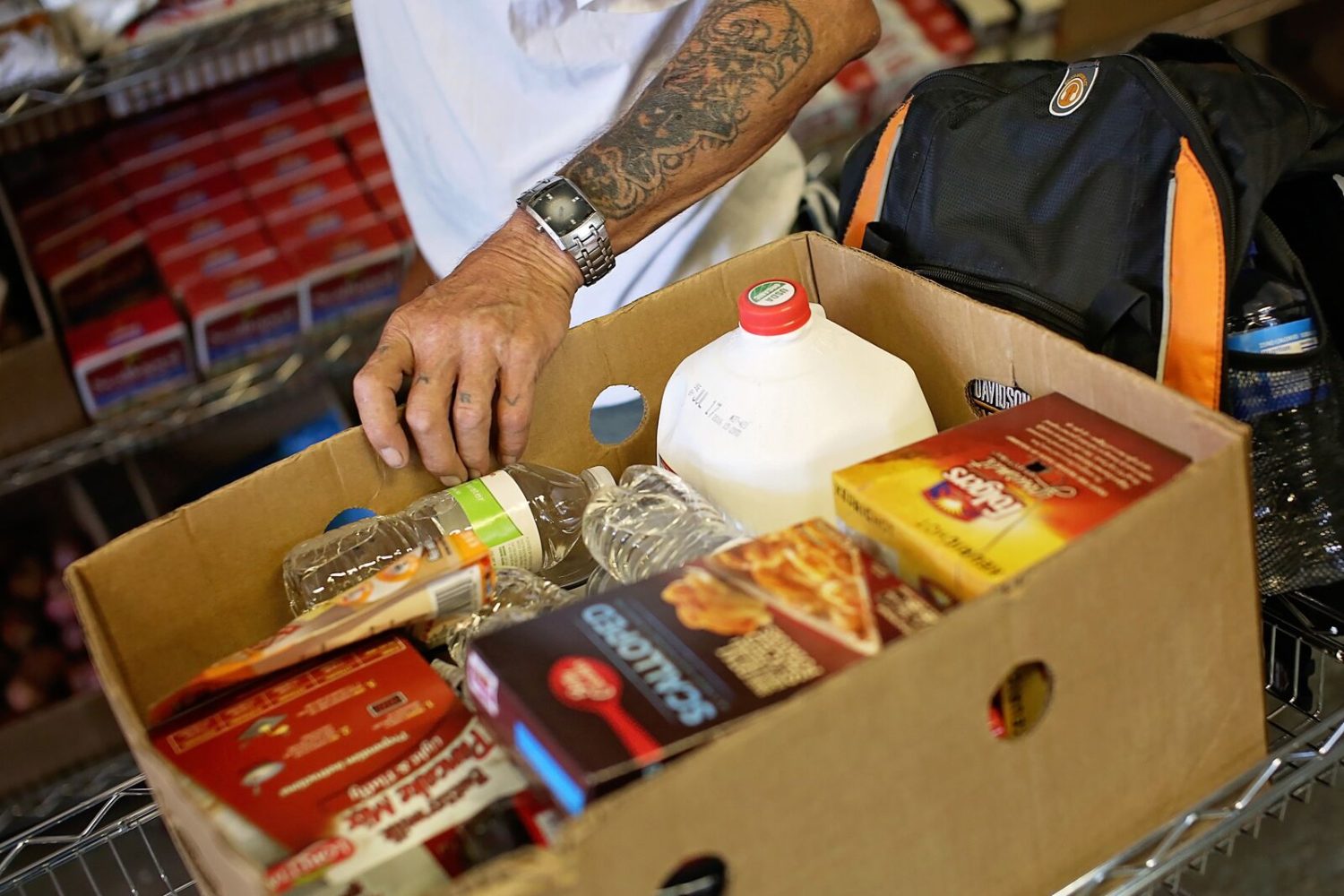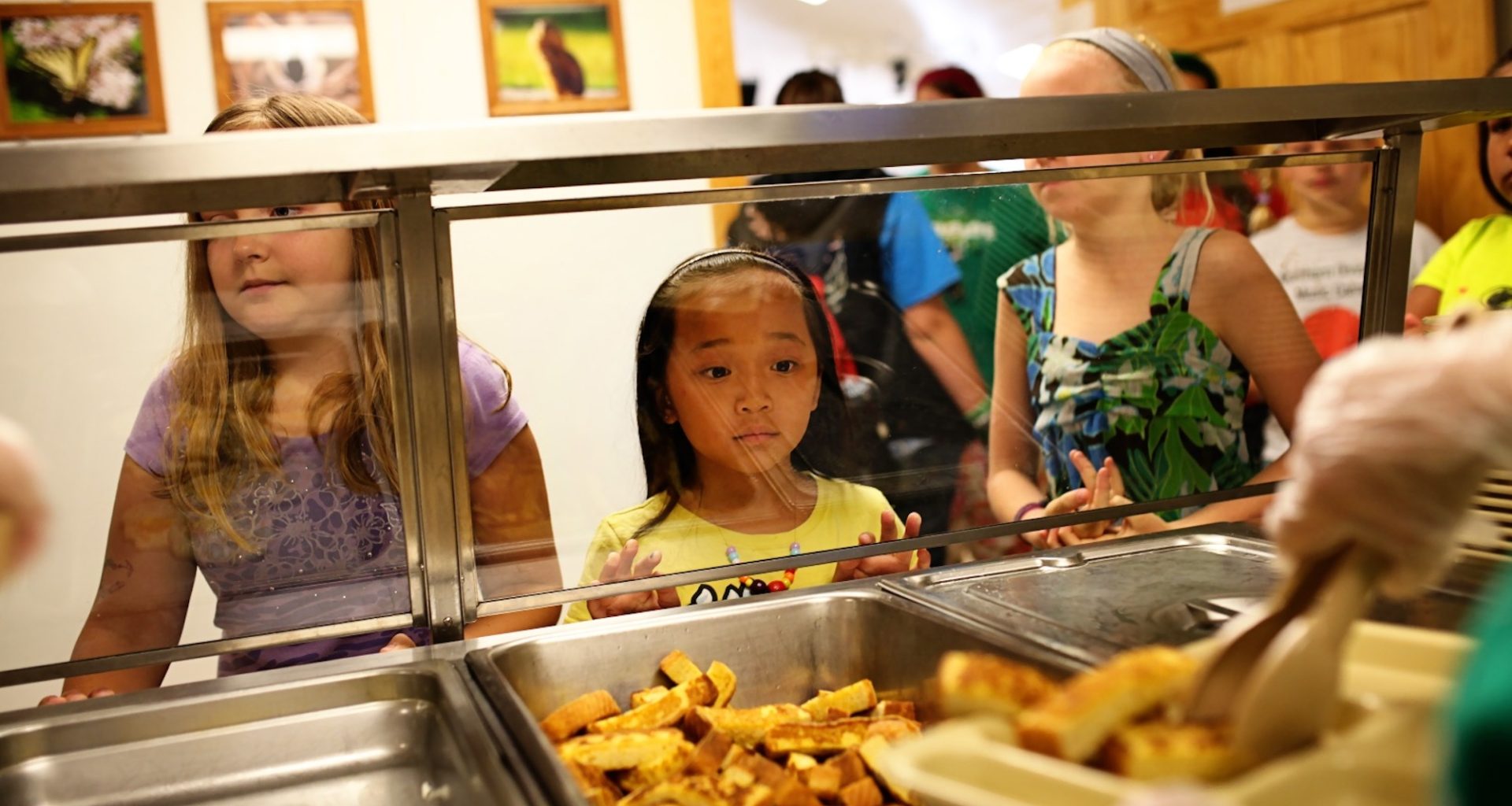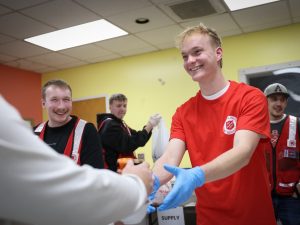As prices rise, The Salvation Army is partnering with schools to fight food insecurity for students and families.
The United States Department of Agriculture (USDA) published its forecast for 2024 food prices, predicting the year would see a 1.6 percent increase for “food-at-home” prices—the food purchased from a grocery store or supermarket.
That’s welcome news following an average annual increase of 5.95 percent since 2020, including the spike in prices by 11.4 percent in 2022.
It’s not just inflation that’s driving prices up, according to the U.S. Government Accountability Office. Supply chain disruptions related to the pandemic and other factors from drought to an outbreak of avian influenza and the war in Ukraine, one of the world’s largest wheat exporters, have had a direct impact on our grocery bills.
And that impact is even more critical considering 10 percent of households in the U.S. were already struggling with food insecurity, meaning limited or uncertain access to adequate food, according to the USDA.
Alongside rising prices, a new report from the USDA found hunger in the U.S. rose sharply in 2022.
Some 44.2 million people lived in households that had difficulty getting enough food to feed everyone in 2022, up from 33.8 million people the year prior, according to the report. Those families include more than 13 million children experiencing food insecurity, a jump of nearly 45 percent from 2021.
Then in April 2024, The Urban Institute, a nonprofit research organization, reported food insecurity increased for the second straight year in 2023.
“For 2020-2021, food insecurity was largely flat overall, reflecting a robust private and public response to the pandemic,” said Dr. Elaine Waxman, senior fellow in the Income and Benefits Policy Center at the Urban Institute and one of the report’s authors. “We saw a huge outpouring of charitable assistance but also things like stimulus checks, enhancements to SNAP and an enhanced child tax credit—even universal school meals—which all made a big impact. Then as those emergency allotments were removed, there was less aid available at the same time of increased pressure from food inflation.”
And that combination squeezed family food budgets.
“Even though other indicators of the economy are mostly positive, [GDP, unemployment, consumer spending], we’re continuing to see rising food insecurity,” Waxman said, and as a consequence: “Charitable food continues to be a lynchpin for a lot of people.”
The Urban Institute found use of charitable food in 2023 remained above prepandemic levels as one in six adults (16.6 percent) reported their households received charitable food.
“We’re meeting needs where families are—in schools.”
Lisa Sargent, The Salvation Army Yakima Corps
It’s something The Salvation Army’s numbers confirm in more recent years, too. In the Western U.S.—spanning the 13 Western states, plus Guam, the Marshall Islands and Micronesia—the organization provided over 6 percent more meals in fiscal year 2023 than the prior year—more than 9 million meals in total. It also provided over 11 percent more grocery orders.
And snacks? Those also increased by more than 27 percent—an additional 815,000 snacks served.
So where are all those snacks going? In some cases, to local schools.
“Most of the schools we partner with say they need snacks—granola bars, jello, apple sauce,” said Lisa Sargent, ministry leader in-charge at The Salvation Army Yakima (Washington) Corps. “Kids come to school still hungry.”
What started as a partnership between The Salvation Army in Yakima and one local school has expanded to include 16 schools across the county serving nearly 800 kids a month.
In some cases, the partnership means school staff have food on hand to give to students who are hungry at school. In others, administrators are sending backpacks filled with food home with students for the weekend.
“We’re meeting needs where families are—in schools,” Sargent said. “Even though we have a flexible food pantry here, it can be hard for families to get here. We realized we needed to reach out to schools.”
It’s part of an effort to reach those who might not know help exists. The Urban Institute found among adults whose households were food insecure in 2023 and did not receive charitable food, just 42 percent were aware of local charitable food resources.
In the heart of central Washington, with surrounding agricultural production of apples, cherries and hops, Yakima has a median household income of $55,734. Just over 19 percent of its 97,000 residents live in poverty.
And as the nation’s food prices increased, The Salvation Army served 174 percent more people in Yakima (or 44,579 total people) in fiscal year 2023 than it did in 2020. Similarly, grocery orders provided jumped by 48 percent to 19,759 orders.
“Every food bank or pantry is struggling in Yakima,” Sargent said. “Our buying power is not as great and at the same time everything is more expensive for families—the cost of living, utilities, rent, food, everything is up.”

The school food security partnership once operated under a grant from the state of Washington, but after it wasn’t reissued, The Salvation Army has turned to donations. “We’re committed to continuing to serve,” Sargent said.
And one of the schools where Sargent noticed a need is Yakima Online High School and Open Doors, for grades 9-12 and ages 16-21, respectively. While these diploma or GED students work primarily online, they can come to the school to do their work. With a combined 750 students and just four portable classrooms, Principal Lois Menard said class is packed every day.
“I have students from all backgrounds. They are the most challenged students. They have the most barriers, in my opinion. All schools have that but here they’re concentrated,” said Menard, who has served as principal here for the past 14 years. “You know, you just know when they have that need. I talk to them privately when they’re bringing their students and ask if they would like a food bag. They are really grateful.”
When one mom recently said yes to an offer for food, Menard carried a bag out to her truck.
“She opened the truck to put the food in and there were two sleeping bags in the back,” Menard said. “It was clear they were living in there.”
She said she gives away about 20 bags of food a week.
“I know the poverty and the struggles in their homes. They might not have heat or money to get here. Many are parents themselves,” Menard said. “But these students are coming here by choice—they’ve made the decision that ‘I’m ready to do education again,’ and I always say when students are safe and they’re not hungry they’re going to learn better. It’s really important.
“I just love these kids, all these people. We’re all just humans,” Menard said. “When you’re kind to people, they’re kind back.”
Nearby at the corps, Sargent also oversees an after-school program that’s at capacity with 40 elementary school kids. Buses from the Yakima School District drop kids off right in front of the building.
Once a week, the program invites parents to come eat dinner with their kids.
But every day, the snacks are ready.
Do Good:
- How do we treat everyone with love and kindness, as if they were our neighbor? Get the Do Good Family Roadmap and take a 4-week journey for families in how to be a good neighbor. Follow the guide to see what the Bible says about the art of neighboring and take tangible steps together on your printable roadmap to be a caring, helpful, welcoming and supportive neighbor right where you are.











